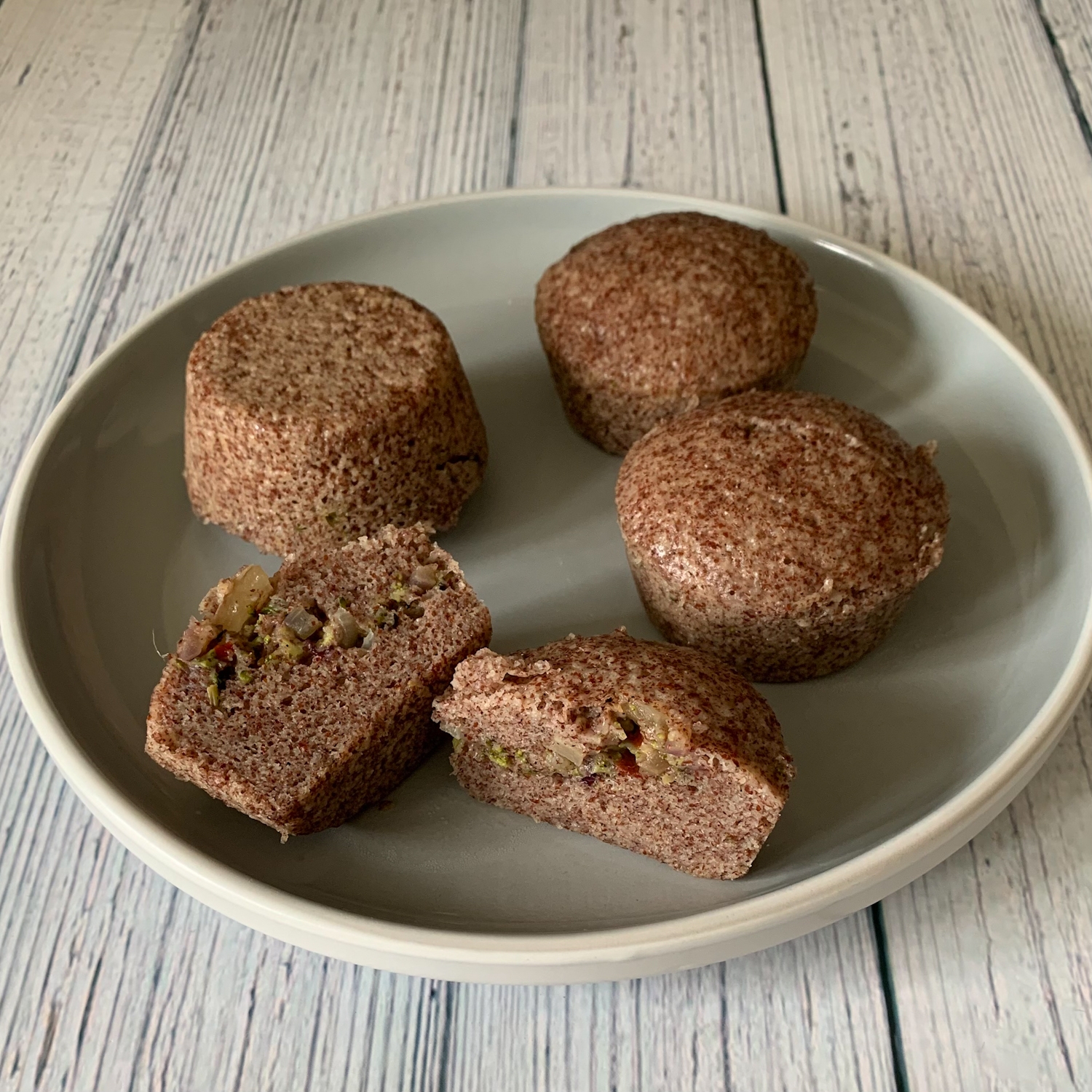
For the batter:
| Whole ragi grains | 1 cup |
|---|---|
| Water | 3-4 cups |
| Urad dal (Split black gram) | ¼ cup |
| Sabudana (/Tapioca pearls) | ¼ cup |
| Methi (Fenugreek seeds) | 1 teaspoon |
| Salt | ¾ teaspoon |
| Ghee/oil | 1 tablespoon |
For the stuffing:
| Onion, small, finely chopped | 1 |
|---|---|
| Red chilli flakes | 1 tablespoon |
| Coriander leaves, finely chopped | 2 tablespoons |
| Broccoli or carrots or radish, grated | 3 tablespoons |
| Salt | to taste |
What You Will Need
To set up, fill water in an idli steamer (fill about 2-3 inches from the base) and place 2 to 3 small steel bowls for support. Then place a wide pan/plate on top of these—this will double as a platform to place the stuffed idlis. For the idlis, use small stainless steel bowls or individual metal/silicone muffin moulds. Additionally, a butter knife or spoon, a mixer grinder, bowls, measuring cups and spoons are also needed.
Instructions
Wash the ragi grains 2-3 times, or until the water runs clear. Soak the grains in fresh water for 8-10 hours, or overnight.
Drain the water and keep the soaked ragi aside.
Wash the urad dal and sabudana 2-3 times. Soak them both, along with the methi seeds, in 1 cup of water for 2-3 hours.
Add the ragi and ⅓ cup of water to the mixer grinder and grind until the ragi is almost smooth. Now add the mixture of the soaked urad dal, sabudana, and methi seeds along with the water used to soak them and grind to a smooth batter. Tip the batter into a bowl.
The batter should have the consistency of regular dosa batter (i.e.pouring consistency).

Mix the batter well using your hands for 2-3 minutes—this will help initiate fermentation.
Ferment the batter mixture at room temperature for approximately 8 hours, or overnight.

Mix together all the ingredients that are listed for the stuffing in a mixing bowl. Set it aside.

Mix the fermented batter gently and add salt to taste. If needed, add ¼ cup of water to adjust the batter till it reaches a thick but smooth pouring consistency.
Place the idli steamer, or a pan filled partly with water, on the stovetop on medium-high heat. Grease the moulds with ghee or oil, and allow the water to come to a boil.
Add a small quantity of batter to each mould, place some of the stuffing mixture on the batter, and then top it up with more batter. Leave some space (about an inch or two) at the top of the vessel so the idli batter will not overflow while cooking. Repeat this process for all the moulds.


Steam the idlis on medium-high heat for 15-16 minutes, or until a skewer comes out clean.
Remove from heat and set the moulds aside for 2-3 minutes, allowing the steam to subside.

With the help of a butter knife or spoon, gently loosen the idlis from the sides of the moulds, and tip them onto a plate. Serve with chutney or sambar, or both.

Tips:
The batter tastes best when fermented, but take care so that it does not over-ferment, which can make it taste pungent, and acidic.
Variations:
The batter can be used to make dosa, uttapam, and paniyaram too.
Padma Kumar is an early-years education entrepreneur and blogs at MyGoodFoodWorld. She divides her time between Manchester and Chennai.
You must be logged in to rate this recipe.

Sign in with email
